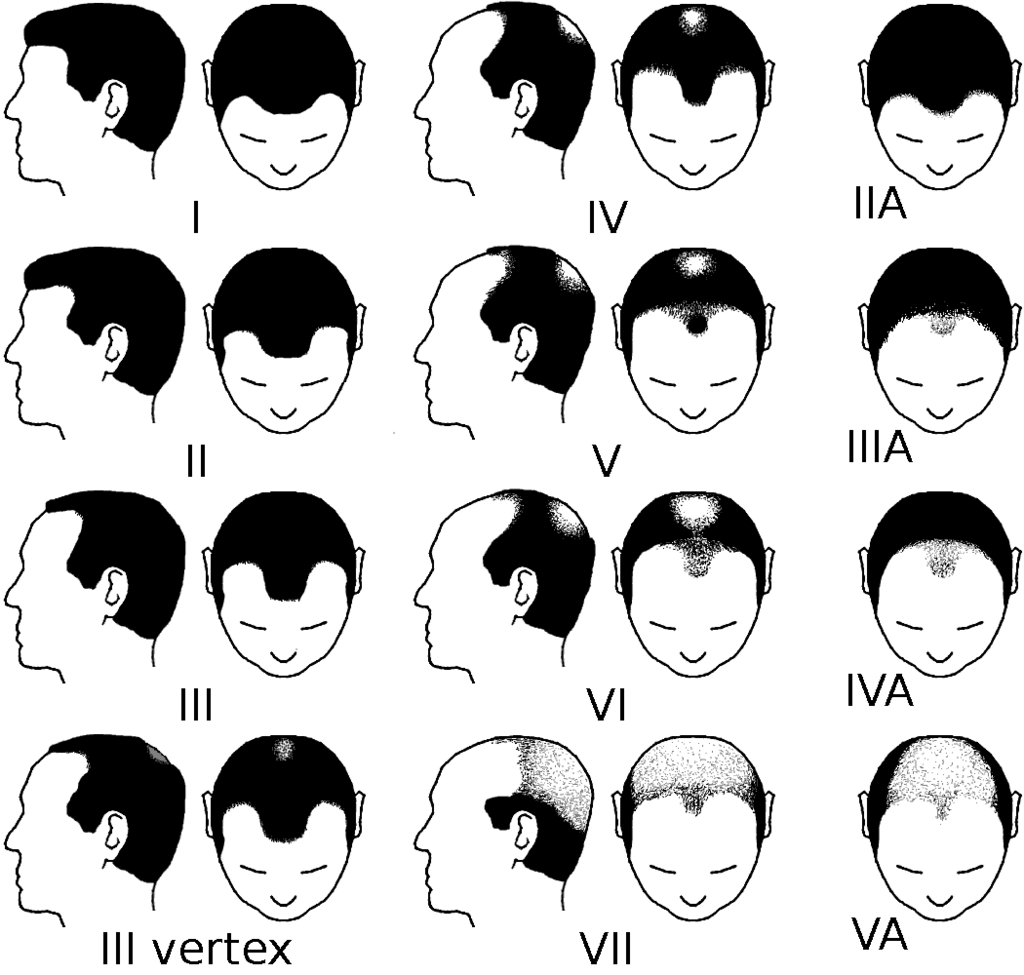- What is male pattern hair loss
- What causes it?
- What treatments are available
- What are the side effects?
- What results can I expect?
- What happens if I stop?
NON SURGICAL COSMETIC TREATMENTS TO THE HIGHEST STANDARDS
Male pattern hair loss is known medically as alopecia androgenetica. It is the most common type of hair loss seen in men and generally effects half of all men over the age of 50 years. It can however start as young as 18 years in some individuals.
Male pattern hair loss typically follows a pattern of loss. This generally starts with recession at the temples and then thinning at the crown. Eventually the two areas meet resulting in a typical horseshoe pattern. This is shown in the diagram.

It is called “andro” “genetica” as male pattern hair loss requires two components to occur. These are the male hormone testosterone which is an androgen and also genetic susceptibility. In other words something we inherit from out parents. If any close male relatives (father, brothers, mother’s father or brothers) have hair loss then this increases our chances of having it as well.
Unfortunately as of yet there is nothing science can do about our genetics with regards to hair loss. However we can do something about the androgen side of things. Medications such as finasteride have shown great effect for stopping hair loss and in some cases causing new hair to regrow.
Finasteride works by preventing the androgen testosterone from being converted to the much more potent androgen dihydrotestoserone. It is this androgen (dihydrotestosterone) which causes out our to thin fallout and eventually stop growing.
Sometimes people have very sensitive hair follicles and finasteride is not able to reduce dihydrotestosterone enough to stop the hair loss. Another medication called dutasteride is much better at reducing this hormone and in some cases can help those who have not responded to finasteride.
Side effects
Finasteride has a good side effect profile and is very safe. However some people have reported trouble getting erections and a reduction of sexual desire. The manufacturer of the medicine, in a study, found that 1.8% of men who took finasteride experienced a reduction in sexual desire. It should be noted however that 1.3% of men who took a placebo (“sugar coated pill”) also experienced this side effect. This indicates that in some people the side effect is not caused by the medicine itself but likely just the suggestion that it would cause a problem.
Finasteride should not be taken by women or handled by pregnant women as there is a risk of harm to the developing fetus. Also men should wear condoms if taking the medication as some of the drug is excreted in semen. For this reason finasteride should not be taken by men who are currently looking to father children. It is safe however to conceive after stopping.
Results
Generally positive results are seen after 6 months. A reduction in shedding may be seen before this and the full extent of any potential regrowth may not be seen for a year.
Do I need to keep taking it?
Finasteride needs to be taken indefinitely for it to continue to work.
What happens if I stop?
If finasteride is stopped then the hair loss will pickup from where it left off. It would not cause you to loose more hair than you would have anyway. Some men choose to stop taking finasteride as they want to start a family. As soon as conception has occurred it is fine to start taking it again.
Other treatment options
Dr Eberwein will happily discuss other treatment options with you during the consultation.
